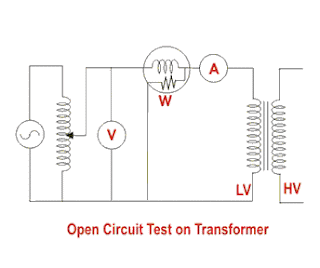Watt Hour Meter
Watt-hour meter is in fact a measuring device which can evaluate and records the electrical power passing through a circuit in a certain time. By implementing the Watt-hour meter, we can know how much amount of electrical energy is used by a consumer or a residence or an electrically powered device or a business. Electrical utilities install these meters at their consumer’s place to evaluate the electrical usage for the purpose of billing. The reading is taken in each one billing period. Usually, the billing unit is Kilowatt-hour (kWh). This is equal to the total usage of electrical energy by a consumer of one kilowatt during a period of one hour and it is also equal to 3600000 joules. The Watt-Hour Meter is often referred as energy meter or electric meter or electricity meter or electrical meter.
Mainly the watt-hour meter comprises of a tiny motor and a counter. The motor will operate by diverting exact fraction of current which is flowing in the circuit to be measured.
Mainly the watt-hour meter comprises of a tiny motor and a counter. The motor will operate by diverting exact fraction of current which is flowing in the circuit to be measured.
The running or turning speed of this motor is directly proportional to the amount of current flow through the circuit. Thus, every revolution of the rotor of the motor is analogous to the given quantity of current flow in the circuit. A counter is attached to the rotor to add and the usage of electrical energy is displayed from the total number of rotor revolutions.
Tampering and Security
Attaching a magnet outside of the old energy meter is the common tampering method seen. The use of the combination of some capacitance and inductive load also result in reduction in rotor speed. The most modern meter can store up the previous value with time and date. So the tampering is avoided. Utilities install remote reporting meters to detect tampering.
Types of Watt Hour Meter
Basically, the watt-hour meter is classified into three different types as follows:
- Electromechanical type induction meter
- Electronic energy meter
- Smart energy meters
Electromechanical Type Induction Meter
In this type of meter, a non-magnetic and electrically conductive aluminium metal disc is made to revolve in a magnetic field. The rotation is made possible with the power passing through it. The rotation speed is proportional to the power flow through the meter. Gear trains and counter mechanisms are incorporated to integrate this power. This meter works by counting the total number of revolutions and it is relative to the usage of energy.
A series magnet is connected in series with the line and that comprises of a coil of few turns with thick wire. A shunt magnet is connected in shunt with the supply and comprises of a coil of large number of turns with thin wire. A braking magnet which is a permanent magnet is included for stopping the disc at the time of power failure and to place the disc in position. This is done by applying a force opposite to the rotation of the disc.
A flux is produced by the series magnet that is directly proportional to the current flow and another flux is produced by the shunt magnet corresponding to the voltage. Because of the inductive nature, these two fluxes lag each other by 90o. An eddy current is developed in the disc which is the interface of the two fields. This current is produced by a force that is corresponding to the product of instantaneous current, voltage and the phase angle among them. A break torque is developed on the disc by the braking magnet positioned over one side of the disc. The speed of the disc becomes constant when the following condition is achieved, Braking torque = Driving torque. The gear arrangement linked with the shaft of the disc is implemented for recording the number of revolution. This is for single phase AC measurement. Additional number of coils can be implemented for different phase configuration.
Electronic Energy Meter
The major feature of the electronic meter other than power usage measurement is that it can display the energy usage on a LED or LCD display. In some advanced meter, the readings can be transmitted to remote areas. It can also record the amount of usage energy in on-peak hours and off-peak hours. In addition, this meter can record the parameters of supply and load like voltages, reactive power used, instantaneous rate of usage demand, power factor, maximum demand etc.
Smart Energy Meter
In this type of meter communication in both directions (Utility to the customer and customer to the utility) is possible. Customer to the utility communication include parameter values, consumption of energy, alarms etc and utility to consumer communication include disconnect/reconnect instructions, automatic meter reading system, upgrading of the software of the meter etc. Modems are implemented in this meter to make communications easy. Communication system includes fiber cable, power line communication, wireless, telephone etc.
Advantages of Different Types of Watt Hour Meter
| Electromechanical Energy Meter | Electronic Energy Meter | Smart Energy Meter |
| Simple construction. | Non-linear loads. | Reduction in the need of visit for reading/taking monthly bills. |
| Accurate and precise measurement. | More robust. | Tampering of meter can be avoided. |
| Reliable. | Improvement in quality of electrical distribution. | Better accuracy. |
| Cost is low. | Highly accurate | Efficiency is high. |









No comments:
Post a Comment